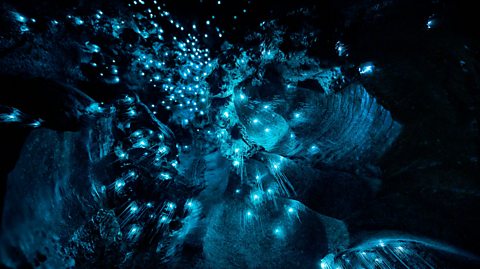Leafy, breath-taking and packed with adventure. That’s right, we’re talking about forests.
Covering over 31% of Earth’s land area, forests can be a restorative and peaceful haven for nature lovers. Not only do they possess a wealth of environmental benefits, but they can be good for our mental health too. A 2019 study found that spending two hours a week in nature can help improve our health and wellbeing. But there's more, a separate research study has shown that even looking at an image of nature can be great way to boost your mood while at home. So what are you waiting for?
From the mountainous terrains of China to the underwater jungles of North America, ґуПуґ«ГЅ Bitesize takes a look at some of the most magical forests from across the world.
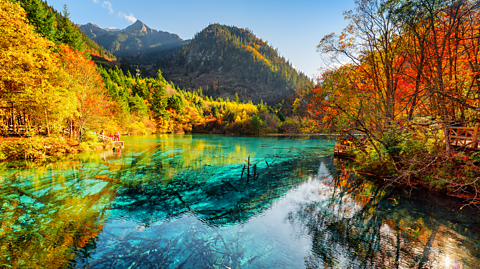
Jiuzhaigou National Park - China
Renowned for its scenic views and majestic landscapes, Jiuzhaigou National Park is a UNESCO World Heritage site that sits along the edge of the Tibetan Plateau in China.
Jiuzhaigou, which translates to “Nine Settlement Valley”, refers to the nine Tibetan settlements along its length.
Amidst approximately 280 square miles (725 sq km) of forest, it hosts many waterfalls, caves, lakes and snow-topped mountain peaks. There is a current human population of 1,000 people, with evidence showing that people have been living in the national park for up to 3,000 years.
According to UNESCO, the reserve is home to 140 bird species. It also hosts a number of endangered animal species, such as the giant panda and the Sichuan takin.
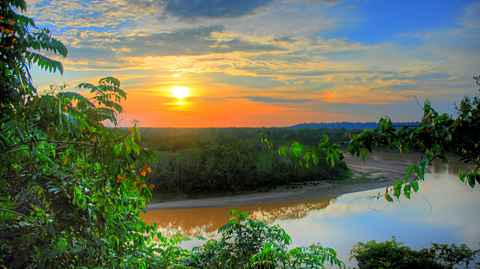
The Amazon Rainforest - South America
Spanning eight countries and encompassing around 40% of Brazil’s total land area, the mighty Amazon Rainforest is often described as the lungs of the planet. By far the largest forest in the world, it covers 2.3 million square miles (5.9 million sq km), stretching from the Atlantic Ocean in the east to the tree line of the Andes in the west.
Approximately 47 million people live in the Amazon region. This includes over 400 different indigenous groups, more than anywhere else on Earth, and an estimated 300 indigenous languages are spoken across the rainforest.
As one of the world’s richest and diverse habitats, it is home to several million species of insects plants and birds. It also boasts major wildlife such as jaguars, capybaras, sloths, red howler monkeys and pink river dolphins. In fact, it is thought to be home to 10% of the known species on Earth.

Channel Islands National Park - North America
This isn’t your typical land forest! On Anacapa Island, a small volcanic island off the coast of California, US, is the Channel Islands National Park, host to a number of underwater kelp forests.
Giant kelp is a type of large, brown seaweed that can be found along the US’s west coast, especially in southern California. One third of southern California’s kelp forests can be found within the Channel Islands National Park.
This kelp grows into forests at depths of nearly 100ft (30m). Its blades provide refuge for over 1,000 types of marine plants and animals that can be found within the Channel Islands kelp forests.
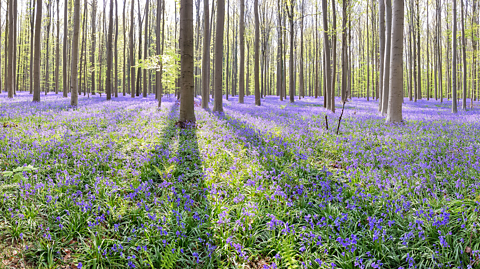
Hallerbos Forest, Belgium
Ever wanted to wander in a real-life enchanted forest? The Hallerbos Forest in Belgium is one of the nearest things you’ll get to a natural wonderland.
Known to some as The Blue Forest, its extensive forest area consists of a variety of tree species, including oak, ash, pine, beech, giant sequoia and larch trees.
Located near the Belgian capital Brussels, the forest used to be part of an ancient woodland that covered much of Central Europe, bordering the Roman Empire in the south and a number of Germanic tribes who lived in the north.
Perhaps the forest's main highlight is its bluebell woods, which generally flower during spring. This fairy-tale-like spectacle only lasts for a few weeks, from the second half of April until the end of May.
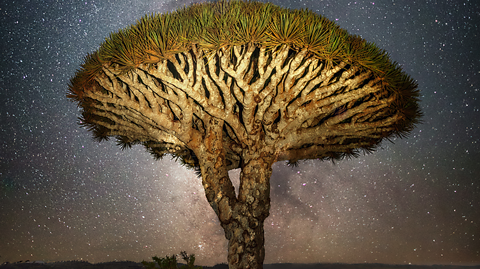
Socotra - Yemen
In the Indian Ocean is a remote island called Socotra. Approximately 210 miles (337 km) southeast of Yemen, the island is home to forests comprised of the distinctive dragon blood tree.
Noted for their other-worldly appearance, the dragon’s blood tree is only native to Socotra and is under increasing threats. Environmental factors, such as land degradation, pollution and droughts, have impacted the island as a result of climate change.
The island is home to a high number of unique flora, with 37% of its plant species found nowhere else in the world. It is also recognised for famous species, such as the dried tree saps myrrh and frankincense.
In 2008, the Socotra An extensive group of islands. was acknowledged as a UNESCO World Heritage site.
This article was published in March 2023
The landmarks under construction quiz
Can you identify these famous structures - even before they were completed?

Are these the most mesmerising gardens in the world?
Take a journey across the world to explore some of the most mind-blowing gardens.
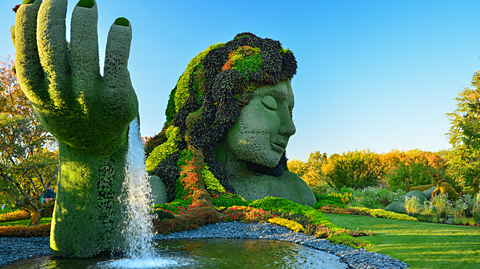
Six of the most naturally colourful places in the world
From blood-red lakes to emerald-green fields, we explore some of the world's most colourful natural locations
